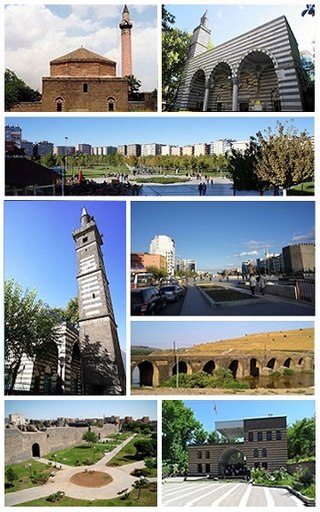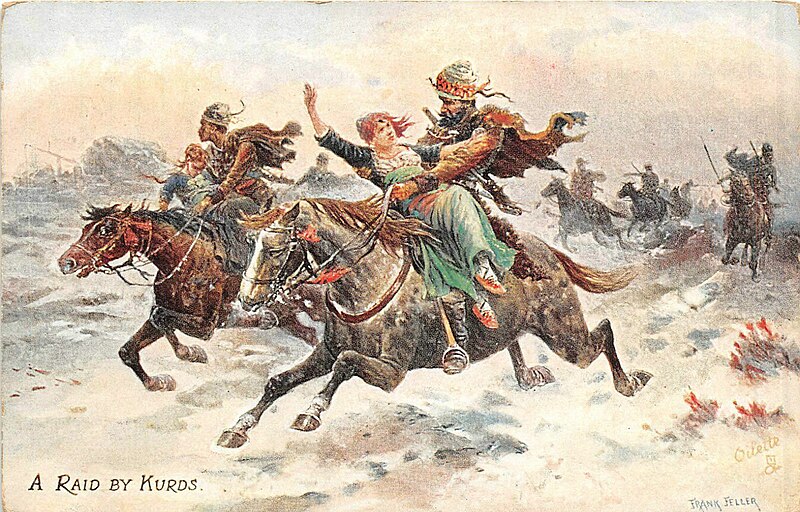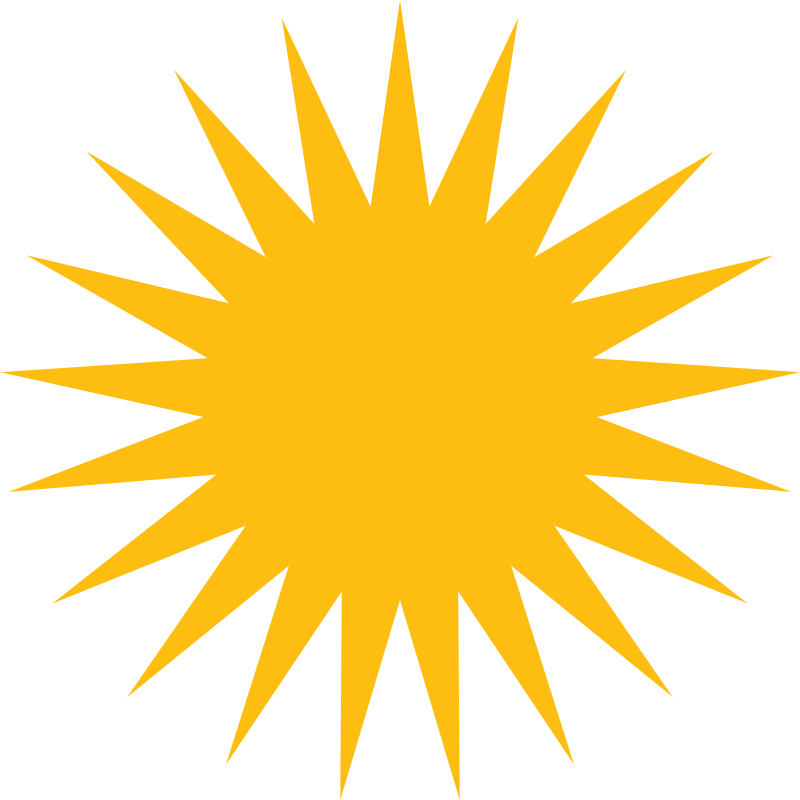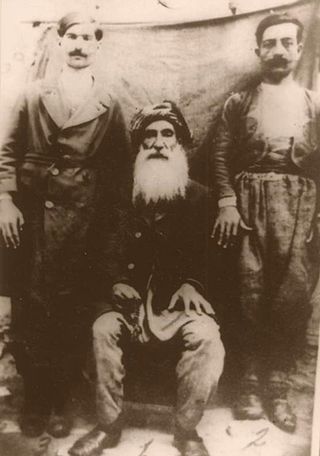St. Gallen, Switzerland, 9 January 2017
“Turkey seems to be falling to pieces, the fall will be a great misfortune.
It is very important that England and Russia should come to a perfectly good understanding… and that neither should take any decisive step of which the other is not apprized.”
“We have a sick man on our hands, a man gravely ill, it will be a great misfortune if one of these days he slips through our hands, especially before the necessary arrangements are made.”
(Russian Czar Nicholas I, Interview, 9 January 1853)

Above: Russian Czar Nicholas I (1796 – 1855)
This handsome devil below is my good friend and Starbucks co-worker, Volkan – a talented musician, a good husband and father and a credit to his employer and his homeland of Turkey.

I asked Volkan once:
“Do you still love your homeland?”
I have never forgotten his answer.
“If you had a child who became sick, would you stop loving it?”
How must it be to simultaneously miss your home and the people you left behind, while feeling glad you are removed from the problems your homeland is in the middle of?
Volkan is a good man.
Volkan is saddened when he reads the news.
An ISIS disciple kills 39 New Year´s revelers at an Istanbul nightclub.
A gunman with a police badge assassinates Russia´s ambassador at an Ankara reception.
Kurdish separatist bombers kill 14 soldiers on a bus in central Turkey and dozens of police at an Istanbul soccer match.
Those assaults were just in the last few weeks, which made a car bombing on Thursday in the city of Izmir, where at least two people were killed, seem relatively minor.
Izmir, Turkey, 5 January 2017

Izmir is a big place, far to the west of Anatolia and the third most populous city in Turkey, after Istanbul and Ankara. (Population: nearly 3 million).

Biblical scholars and fans of Indiana Jones might know Izmir better by its former Greek name, Smyrna.

Izmir has almost 4,000 years of recorded urban history, and it has seen conquerors come and conquerors go, empires rise and fall: the Hittite Empire, the Lydian Empire, the Persian Empire, the empire of Alexander the Great, the Roman Empire, the Byzantine Empire, the Selcuks, the Ottomans and finally modern Turkey.

It has seen conquerors come and conquerors go and has survived earthquakes, plagues and great fires.

Above: The Great Fire of Smyrna, 14 September 1922
Terrorist attacks, though unpleasant, these too Izmir has survived and will survive.
Suspected Kurdish militants clashed with police and detonated a car bomb in western Turkey on Thursday after their vehicle was stopped at a checkpoint, killing a police officer and a court employee, officials said.
The explosion and gunfire outside the main courthouse in Izmir, Turkey’s third largest city, highlighted the country’s deteriorating security after a gunman killed 39 people in a New Year’s Day mass shooting at an Istanbul nightclub.
“Based on the preparation, the weapons, the bombs and ammunition seized, it is understood that a big atrocity was being planned,” Deputy Prime Minister Veysi Kaynak told reporters.
The local governor said the arms included Kalashnikov rifles, hand grenades and ammunition for rocket-propelled grenade launchers.
Izmir police shot dead two of the attackers and were hunting a third, a police source and the state-run Anadolu agency said.
“Our heroic police officer martyred in this attack, Fethi Sekin, prevented a much bigger disaster happening, sacrificing his own life without a thought for it,” Prime Minister Binali Yildirim said in a statement, condemning the “heinous” attack.
Two people, believed to have sold the vehicle used in the attack to the assailants, were subsequently detained, security sources said.
CCTV footage obtained by Reuters showed a passerby fleeing as the vehicle exploded in a fire ball.
Initial findings suggested that Kurdistan Workers Party (PKK) militants were behind the attack, Izmir governor Erol Ayyildiz said.

Dozens of people rushed to the scene of the blast and chanted “God damn the PKK” and other slogans against the militant group.
Volkan told me that his Turkish relatives in Izmir were very close to where the bomb exploded.
A helicopter was seen flying overhead.
Ayyildiz said a second vehicle had been detonated in a controlled explosion.
Anadolu said police suspected the attackers had planned to escape in this vehicle.
NATO member Turkey is part of the U.S.-led coalition fighting Islamic State in Syria and is also battling an insurgency by the PKK in the largely Kurdish southeast.
It regularly bombs PKK camps in northern Iraq and its military operations in Syria also aim to stop Kurdish militias it sees as an extension of the PKK from gaining territory there.
“Turkey will be instrumental in its region. These (attacks) will never prevent us from being present in areas like Iraq and Syria, which produce terrorists like viruses,” Kaynak said.
Ayyildiz said the clash outside Izmir’s main Bayrakli courthouse erupted after police officers tried to stop a vehicle at a checkpoint and that the attackers detonated the car bomb while trying to escape.
The PKK – deemed a terrorist organization by Turkey, the United States and European Union – and its affiliates have been carrying out increasingly deadly attacks over the past year and a half, ever further from the largely Kurdish southeast, where they have fought an insurgency for more than three decades.
A PKK offshoot claimed responsibility for twin bombings that killed 44 people, most of them police officers, and wounded more than 150 outside an Istanbul soccer stadium on 10 December.
A car bomb a week later killed 13 soldiers and wounded 56 when it tore through a bus carrying off-duty military personnel in the central city of Kayseri, in an attack President Tayyip Erdogan also blamed on Kurdish militants.
There was no immediate claim of responsibility for the attack in Izmir, a liberal coastal city which had largely escaped the violence that has plagued Istanbul and the capital Ankara in recent months.
Ayyildiz said the attackers were carrying two automatic rifles, rocket launchers and eight hand grenades.
The attack occurred near a courthouse in Izmir’s Bayrakli district, close to an entrance used by judges, prosecutors and other employees.
Ayyildiz said “six or seven” people were also wounded in the attack, adding that police vigilance had foiled a possible more serious attack.
Police detained 20 suspected Islamic State militants thought to be of Central Asian and North African origin in Izmir on Wednesday, in raids Turkish media said were linked to the Istanbul nightclub attack.
Now, here is where things begin to get confusing and muddled…
Where life gets…complicated.
The Kurds are estimated to number, worldwide, around 32 million with the majority living in West Asia.

Turkey´s Kurdish minority is estimated at more than 15 million people.
Sparsely populated southeastern Anatolia is home to perhaps eight million Kurds, while seven million more live elsewhere in the country, largely integrated into mainstream Turkish society.
Istanbul is the largest Kurdish city in the world, in the way that New York City is home to the largest number of Jews.
The majority of Turkish Kurds are Sunni Muslims.
The city of Diyarbakir serves as the unofficial capital of the Kurdish region.

There has been over centuries a diaspora of Kurdish communities to the cities of western Europe and in coastal Turkish cities like Adana and Izmir.
In western Europe, Germany has the greatest number of Kurdish people: 800,000.
Britain has 50,000, Switzerland has 35,000, the US – over 15,000, Canada – over 12,000.
The Kurds are an ancient people, mentioned as far back as 4,000 BC when they are mentioned on Sumerian clay tablets.

Many Kurds consider themselves descended from the Medes, an ancient Iranian people and some even use a calendar dating from 612 BC when the Assyrian capital of Nineveh was conquered by the Medes.
This claim is reflected in the words of the Kurdish “national” anthem:
“We are the children of the Medes and Kai Khosrow.”
(Kai Khosrow was a legendary king of the Kayanian dynasty and a character in the Persina epic book Shahnameh.

The Cup of Kai Khosrow was a cup of prophecy and divination which was said to be filled with the Elixir of Immortality, and some suggest might be the origin of the ideas we have of crystal balls, reading tea leaves, the Fountain of Youth and the Holy Grail.
The Kayanians were the heroes of the Avesta – the sacred texts of Zoroastrianism.
Zoroastrianism was already one of the world´s oldest religions when it was first recorded and is said to have strongly influenced Judaism, gnosticisim (monks and hermits), Christianity and Islam with the concepts of a Messiah, Heaven, Hell, free will and the universal struggle between Good and Evil.)
Persian King Ardashir I the Unifier (180 – 242), was depicted as having battled the Kurds and their leader Madig.

In a letter Ardashir I received from his foe Ardavan V, Ardashir himself is referred to being a Kurd himself:
“You´ve bitten off more than you can chew and you have brought death to yourself.
O son of a Kurd, raised in the tents of the Kurds, who gave you permission to put a crown on your head?”
In 360, Sassanid King Shapur II marched into the Roman province Zabdicene to conquer its chief city of Bezabde (present day Cizre) to find the city heavily fortified and guarded by three Roman legions and a large body of Kurdish warriors.

In 639, Sassanian General Hormuzan battled Islamic invaders in Khuzestan and called upon the Kurds to aid him in battle.
Hormuzan lost and the Kurds were brought under Islamic rule.
Many dynasties would rise and fall and the Kurds were either used in great military campaigns throughout recorded history or they would be considered a problem by those who had conquered Kurdish territory.

Under the leadership of Saladin, Kurds would be instrumental in the recapture of Jerusalem from the Crusaders at the Battle of Hattin (4 July 1187).

Above: Salah ad-Din Yusuf ibn Ayyub (or Saladin)
Kurds would revolt several times against their rulers and rulers would put down these rebellions and punish the Kurds by forcing them to move away from their territories, be forcibly and massively deported and enslaved.
The Ottoman Empire had historically and successfully inteegrated (but not assimilated) the Kurds by repressing Kurdish independence movements.
The Russo-Turkish War (1877 – 1878) devastated Kurdish territory and left therein a political vacuum.
Sheik Ubeydullah, a powerful landowner, filled the role and demanded recognition from the Ottoman Emire for an independent Kurdish state.

“The Kurdish nation, consisting of more than 500,000 families is a people apart.
Their religion is different and their laws and customs distinct.
We are a nation apart.
We want our affairs to be in our hands, so that…we may be strong and independent and have privileges like other nations.
This is our objective.
Otherwise, the whole of Kurdistan will take matters into their own hands as they are unable to put up with these continual evil deeds and the oppression, which they suffer at the hands of the Persian and Ottoman governments.”
Ottoman Sultan Abdul Hamid responded with a campaign of integration by co-opting prominent Kurdish opponents with offers of prestigious positions in his government.

Above: Sultan Abdul Hamid II (1842 – 1918)
This strategy appears to have worked given the loyalty displayed by the Kurdish Hamidiye regiments during World War I.

The Young Turks, a political reform movement that consisted of Ottoman exiles, students, civil servants and army officers, favoured the replacement of the Ottoman Empire´s absolute monarchy with a constitutional government and led a rebellion against the absolute rule of Sultan Abdul Hamid II in 1908.
With this revolution, the Young Turks helped to establish an era of multi-party democracy for the first time in Turkey´s history.

After 1908, the Young Turks’ political party, the Committee of Union and Progress (CUP) began a series of modernizing military and political reforms across the Ottoman Empire.
By 1913, the CUP-led government was headed by Interior Minister and Grand Vizier Talaat Pasha, War Minister Enver Pasha and Naval Minister Djemal Pasha.
The “Three Pashas” exercised absolute control over the Ottoman Empire from 1913 to 1918, bringing the country closer to Germany, signing the Ottoman-German Alliance to enter the Empire into World War I on the side of the Central Powers and carrying out the Armenian Genocide (1914 – 1917).
Jakob Künzler, of Hundwil, Appenzell, Switzerland, the head of a missionary hospital in Urfa, documented the large scale ethnic cleansing of both Armenians and Kurds by the Young Turks.

Above: Jakob Künzler (8 March 1871 – 15 January 1949)
The Kurds were perceived to be subversive elements that would take the Russian side in the War.
The Young Turks embarked on a large scale deportation of Kurds, aiming to weaken the political influence of the Kurds by deporting them from their ancestral lands and dispersing them in small pockets of exiled communities.
By the end of World War I, up to 700,000 Kurds had been forcibly deported and almost half of the displaced perished.
On 10 August 1920, in the exhibition room of a porcelain factory in Sevres, France, the Manufacture nationale de Sevres, four representatives of the Ottoman Empire and representatives of the Allied Powers (the UK, France and Italy) met to discuss the partition of the Ottoman Empire.

Much to the world´s shock the Ottoman Empire was allowed to continue to exist but with much of its territory assigned to various Allied powers.
This Treaty would ultimately lead to the creation of Israel, Syria, Lebanon and Armenia.
It would also lead to two wars: the Greek – Turkish War (1919 – 1922) and the Turkish War of Independence (1919 – 1923).

Above: The Turkish Army enters Izmir (9 September 1922).
Izmir is both the beginning and end location of the Turkish War of Independence.
On 15 May 1919, armed Turkish civilians first resisted the occupation of Turkey by the Allies following the Treaty of Sevres.
The end of the Ottoman Empire and the establishment of the nation of Turkey, led by Mustafa Kemal Atatürk, made the Kurdish people feel threatened, as radical secularisation which the strongly Muslim Kurds abhorred and the centralisation of authority and rampant Turkish nationalism marginalised Kurdish autonomy.

Above: Mustafa Kemal Atatürk (1881 – 1938)
Some Kurdish groups sought self-determination and the confirmation of Kurdish autonomy as established in the Treaty of Sevres, but Kemal Atatürk prevented such a result.
On 6 March 1921, 6,000 members of the Kocgiri tribe rebelled.
The commander of the Central Army Nureddin Pasha said:

Above: Nureddin Pasha (1873 – 1932)
“In Turkey, we cleaned up people who speak Armenian.
I´m going to clean up people who speak Kurdish.”
The brutality of his repression made the National Assembly decide to put Pasha on trial.
Although Pasha was dismissed from his position and recalled to Ankara, Atatürk intervened and prevented a trial.
In 1925 Sheikh Said and a group of former Ottoman soldiers known as the Hamidiye, led the Kurdish groups the Zaza and the Kurmanj in rebellion against the Turkish state.

Above: Sheikh Said (bottom right)
Various elements of Turkish society were (and still are) unhappy that Atatürk had abolished the Islamic Caliphate system.
Apart from inevitable Kurdish cultural demands and complaints of Turkish maltreatment, the rebels were also afraid of imminent mass deportations.
They were also annoyed that the name “Kurdistan” did not appear on maps, at restrictions on the Kurdish language and education, and they objected to the Turks’ economic exploitation of Kurdish areas at the expense of the Kurds.
“Certain among you have taken as a pretext for revolt the governmental administration.
Some others have invoked the defence of the Caliphate.” (Military tribunal President, 28 June 1925)
Sheikh Said appealed to all Muslims of Turkey to join in the rebellion.
15,000 men did.
In the night / early morning of 6 – 7 March the forces of Sheikh Said laid siege to the city of Diyarbakir with a force of 10,000 men, attacking the city at all four of its gates simultaneously.
All of the rebel attacks were repelled by the Turkish garrison’s use of machine gunfire and mortar grenades.
When the rebels retreated, the area around the city was full of dead bodies.
By the end of March, most of the major battles of the Sheikh Said rebellion were over as the Turkish authorities crushed the rebellion with continual aerial bombardments and a massive concentration of forces.
Sheikh Said was captured and executed by hanging.
In the east of Turkey in Agri Province, during a wave of rebellion among Kurds led by General Ihsan Nuri Pasha, a self-proclaimed Kurdish state arose in 1927 called the Republic of Ararat and Kurdava, a village near Mount Ararat, was designated as its capital.

Ararat made appeals to the Great Powers and the League of Nations and sent messages for assistance from Kurds in Iraq and Syria, but to no avail.
On 12 July 1930 in the Zilan valley located to the north of the town of Ercis in Van Province, 1,500 armed Turkish soldiers destroyed 220 Kurdish villages and massacred 5,000 women, children and elderly Kurds.

Above: Headline of the Turkish daily Cumhuriyet, 13 July 1930:
“Cleaning started, the ones at Zilan valley were completely annihilated.
None of them survived.
Operations at Ararat are continuing.”
By the summer of 1930, the Turkish Air Force was bombing Kurdish positions, demoralising the Kurds and leading to their surrender and Turkey resuming control over the territory.

Most of the former Ottoman Empire’s eastern regions had been administered by feudal lords, tribal chieftains and dignitaries, but as the Republic of Turkey grew in power and confidence the Dersim region tribes objected to losing their authority and refused to pay taxes.
Complaints kept coming from the governors, so by 1926 the Atatürk government considered it necessary to use force against the people of Dersim.
Dersim had a reputation for being rebellious, having been the scene of 11 separate periods of armed conflict over the previous 40 years.
Ankara began to pass laws to “Turkify” the eastern provinces:
1934: Law on Resettlement: forced relocation of people within the country, to promote cultural homogeneity
1935: The Tunceli Law renaming Dersim “Tunceli”
On 1 November 1936, during a speech in Parliament, Atatürk acknowledged the situation in Dersim as Turkey´s most important internal problem.
The Turkish government built military observation posts in the centres of Kurdish districts.
Following public meetings in January 1937, a letter of protest against the Tunceli Law was written to be sent to the local governor.
“The government has tried to assimilate the Kurdish people for years, oppressing them, banning publications in Kurdish, persecuting those who speak Kurdish, forcibly deporting people from fertile parts of Kurdistan for uncultivated areas of Anatolia where many have perished.
The prisons are full of non-combatants, intellectuals are shot, hanged or exiled to remote places.
Three million Kurds demand to live in freedom and peace in their own country.” (Nuri Desimi)
The emissaries of the letter were arrested and executed.
In response, a group of local Kurds ambushed a police convoy in May.
The Dersim Rebellion had begun.
“The rebellion was clearly caused by provocation.
It caused the most violent tortures that were ever seen in a rebellion in the Republican years.
Those that didn´t take part in the rebellion and the families of the rebels were also tortured.” (Huseyin Aygun, Dersim 1938 and Obligatory Settlement)
In September 1937, a Kurdish leader Seyit Riza came to the government building of Erzincan Province for peace talks and was immediately arrested.

Riza was tried and sentenced after a show trial.
Riza and his companions were not informed of their rights nor the details of their case.
No lawyer was provided for them.
They were not able to understand the language of the trial in Turkish since they spoke only Kurdish.
No interpreter was provided.
Seyit Riza was almost 78 years old, making it impossible to hang him.
The court accepted he was only 54.
Riza was transferred to the headquarters of the General Inspectorate at Elazig.
Riza did not understand the meaning of the judgement until he saw the gallows.
“You will hang me.”, he said.
Then he turned to me and asked:
“Did you come from Ankara to hang me?”
We exchanged glances.
It was the first time I faced a man who was going to be hanged.
He flashed a smile at me.
The prosecutor asked whether he wanted to pray.
He didn´t want it.
We asked his last words.
“I have 40 liras and a watch.
You will give them to my son.”
We brought him to the square.
It was cold and there was nobody around.
However, Seyit Riza addressed the silence and emptiness as if the square was full of people.
“We are the sons of Karbala. (the land which will cause many agonies (karb) and afflictions (balā) )
We are blameless.
It is shame.
It is cruel.
It is murder.”
I had goose bumps.
This old man swept to the gallows, strung the rope around his own neck, kicked the chair and executed himself.” (Minister of Foreign Affairs Ihsan Sabri Caglayangil)
Six of his companions would also hang that evening.
Turkish planes flew numerous sorties against the Dersim rebels, bombing the district with poisonous gas.
Over 70,000 Kurdish civilians were killed by the Turkish Army and over 11,000 taken into exile.
Many tribesmen were shot dead after surrendering.
Women and children were locked into haysheds which were then set on fire.
Around 3,000 Kurds were forcibly deported from Dersim.
Southeast Anatolia was put under martial law.
In addition to more destruction of villages and massive deportations, the Turkish government encouraged Albanians and Assyrians to settle in Kurdish areas to change the ethnic composition of the region.
People were put in barns and caves and burned alive.
Forests were surrounded and set ablaze to exterminate those who had taken refuge there.
Many Kurdish females committed collective suicide and threw themselves into rivers.
More than 1.5 million Kurds were deported and massacred.
The area remained under permanent military siege until 1950.
In order to prevent the events from having a negative impact on Turkey´s international image and reputation, foreigners were not allowed to the visit the entire area east of Euphrates until 1965.
The Kurdish language was banned and the words “Kurds” and “Kurdistan” were removed from dictionaries and Kurds only referred to as “Mountain Turks”.
“The Turks, who had been fighting for their own freedom, crushed the Kurds, who sought theirs.
It is strange how a defensive nationalism develops into an aggressive one, and a fight for freedom becomes one for dominion over others.” (Jawaharial Nehru, Glimpses of World History, 1942)
Might the Kurds hold a grudge?
(To be continued)
Sources: Turkey: What Everyone Needs to Know / Wikipedia


